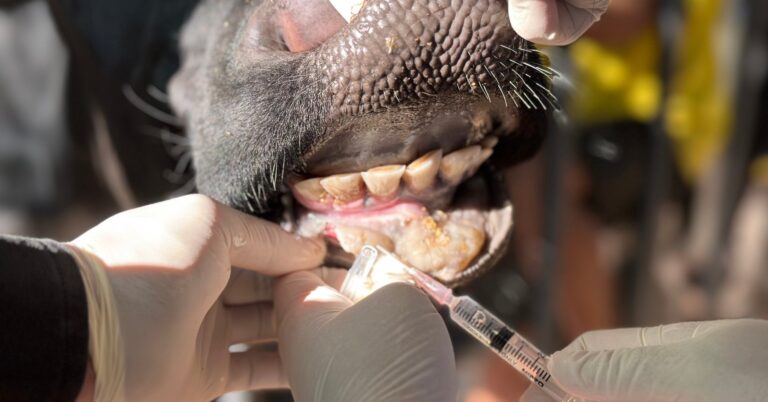A devastating epidemic of foot-and-mouth disease in Hungary has sent a shiver across Europe, with gruesome footage from the village of Csemeztanya showing blood oozing from the ground where thousands of cattle were buried to curb the epidemic.
The video that has gone viral on social media has generated panic and speculation, especially after Hungarian officials suggested that the epidemic might have been caused by an “artificially engineered” virus, even as no concrete evidence has yet come to light to substantiate the theory.
“At this stage, we can say that it cannot be ruled out that the virus was not of natural origin, we may be dealing with an artificially engineered virus,” Prime Minister Viktor Orban’s chief of staff, Gergely Gulyas, told a media briefing, according to Reuters.
The outbreak, the first in more than 50 years, has triggered mass testing on nearly 1,000 farms, and four confirmed contaminated areas were discovered in the northwestern region of Hungary, bordering Austria and Slovakia. Hungary possessed 861,000 head of cattle as of December, official data indicate — about 1.2 percent of all European Union cattle.
The highly infectious virus — which infects cloven-hoofed animals like cattle, sheep, goats, and pigs — causes fever, painful blisters, and heavy economic losses to the producers. Although harmless to humans, the disease can cause destruction of livestock herds and the cessation of international trade.
As a reaction, thousands of cattle have already been slaughtered in a bid to limit the spread. Austria and Slovakia have closed down dozens of border controls and made emergency biosecurity measures following the discovery of the disease in southern Slovakia as well. Slovakian authorities also asked for water testing on an urgent basis, concerned about potential contamination from burial sites.
While investigations are ongoing, Hungarian authorities and neighboring countries are on high alert, not only against the biological dangers but also against the danger of intentional sabotage. Whether natural or artificial, the haunting images of bubbling blood and abandoned pastures serve as a bleak reminder of the vulnerabilities agriculture in the world is exposed to.
»Related: Germany hit with export bans after foot-and-mouth outbreak


:max_bytes(150000):strip_icc()/101651813_farm_grain_bin_silo-e2193f5114804686bbea64c89dc0da76.jpg)
:max_bytes(150000):strip_icc()/Luecke3_preview-1f450a0be346443f956da98703bdc439.jpg)
:max_bytes(150000):strip_icc()/JD_SPFHSide_r2g085323_rrd-9fe1ddc407074678b9a14b74c2fdf9e2.jpg)



:max_bytes(150000):strip_icc()/100867484_wheat-ed84884a12c94cf38d0749472f0cf1a3.jpg)
:max_bytes(150000):strip_icc()/54567219870_b2c03840fc_o-9ddb6162d60a477aa91843b1e1051542.jpg)
:max_bytes(150000):strip_icc()/Wetland-Conservation-Indiana-2-2000-8e1d2649f7604bb58dfb1b25c60e46fd.jpg)